The only thing I remember about that autumn day when Betty and I arrived in Haslemere is a conversation with the billeting officer; discussing the difficulties of arranging accommodation for newcomers to the Admiralty Signals Establishment, he told us about a brilliant mathematician who kept bicycle parts in the wardrobe and clothes under the bed.
My billet turned out to be a very small bedroom in a small house in Shottermill, the western suburb of the town. The rent for bed, breakfast and evening meal was £1 per week, half my salary as a Temporary Experimental Assistant, Grade III. The following day a 'ferry' would collect me and other ASE employees for transport to work. A Temporary Experimental Officer, Peter Flowerday, was billeted in the same house. His bicycle caused no problems.
It was a tandem, and one Saturday afternoon he invited me to accompany him to collect sweet chestnuts from a wood a few miles out on the Liphook road. Never wear a pleated skirt on a tandem! It blows over your face when you get up speed but you just have to keep on pedalling. The chestnuts were worth it, though.
At Peter's suggestion I joined a German class that was held on Wednesday evenings in the town, run by a refugee endearingly proud of her new-found ability to pronounce 'rose' as the English do. One such evening he introduced me to a colleague from the optics division sitting in the row behind. It still amazes me that that first sight of Dick Sillitto's hands is etched in my memory though at the time I, at least, did not find the meeting significant. He was to be the love of my life.
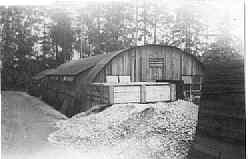
After a few days working in the library at Lythe Hill I asked for something more hands-on and was moved to the transformer testing department at Whitwell Hatch, another big country house hotel commandeered by the Admiralty when it evacuated its base at Portsmouth. The work was interesting for a couple of weeks. We worked overtime on alternate Saturday afternoons, maybe a hangover from the hectic days before D-day earlier in the year. Certainly there was little work to do, those afternoons. I shared my lunch breaks with a handful of technicians, most of them Pompey lads, who were remarkably polite in their entertaining banter (or maybe it just went over my head). The brightest of them was working in one of the research divisions, in the Elsan Hut so called from the shape of the experimental aerial on its roof. I never saw this strange device, but did manage to arrange to be transferred to that division after the end of the year. In my naivety I backed up my request by citing the lack of work during 'overtime', and was intensively questioned about this by a pair of patronising civil servants; to my horror my immediate boss was sent back to Pompey.
I cannot remember the name of the vivacious woman some years my senior, nor what she did at ASE, but I remember vividly the house she was renting with a bedroom to spare. Some miles north of Hindhead on the road to Farnham, the old Hop House at Churt was unique. My room was accessed by its own staircase in the thick wall surrounding a huge high-ceilinged circular livingroom complete with open fire and piano. Visitors came frequently for conversation, music and laughter. They all smoked (tobacco) and I copied them for about ten days before realising what a daft waste of money it was. The lease of the house would run out at the end of the year.
Meanwhile I met up occasionally with Betty, who continued working in the library, to explore the entertainment on offer in the area - cinema in Haslemere, concert in Guildford, 'welsh rabbit' in a Shottermill café. One weekend we took our bicycles on the train to Portsmouth, recognised its devastation, and went to the Isle of Wight. As we boarded the ferry, who should be coming down the gangway but two of our seven fellow students in Belfast, Alec Martin and Peter Brannigan, now naval radar officers. They survived the war but we never met Peter again. I did, though, have a gossip with Alec on the train to Larne at the end of the Christmas vacation.
January, 1945, saw me in a billet in Grayswood, a hamlet some two miles north of Haslemere. My landlady in Three Gates Lane was a kindly woman with two burly, amiable teenage sons who worked in the surrounding woods. My attempt to engage them in conversation at the first evening meal produced a sound I'll never forget, but cannot accurately reproduce: Aiowh - you mean a paiowcher! Macaroni cheese figured often on the menu, but the cheese ration was minute and flavourless, the proportion of macaroni enormous. That January was bitterly cold and the house was not well insulated. I wore a dressing-gown in bed, a Christmas present from my mother which she had made from a colourful blanket. Deep snow showed off the beauty of the lightly wooded countryside,
countryside that I never could think of as 'country'. As spring arrived Dick and I became well acquainted with the different routes from Haslemere and with places where we could sit and watch the stars. On my 21st birthday, in June, he gave me an engraving by Joan Hassall, Keek into the Draw Well. Only 2 3/4 " by 1 3/4", it was mounted in a simple frame about A4 size. Nice frame! was Mrs Lawes' comment.
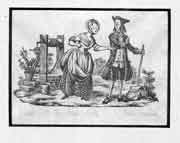
Many evenings she allowed us the use of her sittingroom, with an open fire, while Dick was helping me revise for my physics resit; only when I was leaving did she tell me what a sacrifice this had been for her and the boys.
That was in high summer, when a new hostel for ASE women was opened in a large house on the hill above Haslemere. The war in Europe had already come to an end. Betty, Dick and I had joined in the celebrations round a bonfire on Grayswood Common, the first time Dick and I held hands in public. Unlike me, he stayed in the same billet for the whole of his three years at ASE. Miss Upfold and her ancient Dad lived in a small, two up, two down house near the railway, real Haslemere characters. She worked in one of the 'posh' houses on the hill and was particularly proud of her skill at cleaning brass and copper. They were very fond of Dick, and he of them, and sent us a copper bowl in a present for our wedding.
As the first to arrive the day the new hostel opened, I grabbed the bed in the bay window of a large first floor room. Looking down at the lawn I was fascinated by wind waves flowing through the long uncut grass. One night a bee stung my nose while I slept. Less dangerous but more obvious were the maybugs which battered against the glass, larger than any insects I had ever seen. A pleasant girl from Hampshire was next to arrive. Muriel, and later her husband Jack Deasley, remained loosely-bound friends throughout her life. Once, they visited us in Edinburgh and she was astounded that our landlady did not sound like Harry Lauder. In the darker part of the room three or four beds were occupied, usually only well after midnight, by girls whose lives revolved around the nearby Canadian Airforce base.
Throughout my life my ambition has outrun my competence, and I failed in my first task in the dielectric aerials section, to design and build a high-speed oscilloscope. I did, though, meet some interesting people, including Robert Watson Watt who told me bluntly that I had not done my homework. I shared a work bench with three lovely Wrens, Beryl Aylet, Joan Marshall and Ishbel Muir. They presented Dick with a gold signet ring when he left ASE in summer 1946, and sent us a wedding present, but we lost their address in a move, and never heard of them again. The head of the section was a brilliant man, Peter Trier. I remember him one Monday morning in 1945 telling us that a friend had just informed him she was going to the Balkans as a volunteer aid worker; so he asked her to marry him instead. We visited them, still in Haslemere, a few years later. Peter died a few days after Dick, in 2005, having achieved great distinction. This nugget comes from the Brunel University website: The Margaret Trier Memorial Prize was established by the late Dr Peter Trier, a former Chairman of the University Council and Pro-Chancellor, in 1999, in memory of his late wife. The prize is awarded annually to the 'best woman' graduating with a first degree in the School of Engineering and Design, ......
Peter had been one of the 'enemy aliens' living in Britain who were interned when Churchill took over the government in 1940. In July he was among the thousands transported to Canada in the vilest of overcrowded conditions on the SS Ettrick. Also among them were Hermann Bondi and Tommy Gold. All three were directed to ASE when they returned in early 1941. Bondi and Gold, with Fred Hoyle, were in the radar division in Witley. Dick often recalled a hilarious few weeks in early 1944 when he was seconded to them to work on a project using optical techniques for detecting targets in noisy radar displays.
Several very different 'aliens' worked in the direction finding division. Rosinski, Struszynski, and Toczylowski are names I remember. Indeed, a new catchphrase spread through the establishment when one of the other Poles in the division answered the telephone and said only ... ... ... ... tomorrow will be Toczylowski !
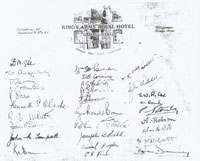
Other names I remember from that group were Redgement, Muggridge and Mary Moore. Two members of the group were particularly well-known outside it, E. G. Robus and R.T.P. Whipple. Robus, usually called Egg, had a large collection of classical music records and a record player. He regularly took them to the Wrens' hostel of an evening and anyone could attend the concert. Very few compositions could be fitted into a single side of one of those easily broken pre-vinyl records; some symphonies required over a dozen pauses for turning the record over, but we did appreciate them. I've a vague memory that it was Egg who had been employed pre-war in the local Dolmetsch instrument-making workshop, famed for its harpsichords.
Ray Whipple was the brilliant mathematician of my first day at ASE. In 1938 he had calculated the reradiation of a vertical conductor in relation to the incident field, a vitally important contribution to the development of radio direction finding. In October 1941 the group became interested in the Decca navigator system which allowed a ship to identify its position by comparing signals received from three correlated land-based transmitters. Under Dr C Crampton's leadership they developed this, with trials in the Irish sea in September 1942 and April 1943. February/March 1944 saw a trial in conjunction with a large-scale assault and landing exercise in the Moray Firth. On 5 June 1944 the system was used by 21 minesweepers and other vessels to navigate accurately across the English Channel and to sweep the minefields in planned areas in preparation for the Normandy Landings the following day. Legend has it that on D-day Ray lightened the tension for the troops by getting engrossed in a particularly interesting cloud formation and walking off the edge of the quay.
In July, 1945, I visited Dick's home in Lockerbie and met his widowed mother, her sister evacuated from the south coast, two of his four brothers, two of his sisters-in-law and a 5-year-old nephew, as well as a number of old friends. Eldest brother, Percy, was a chemist working for ICI and brother 4, Fred, was a journalist just demobbed and home for the first time since he was captured at Tobruk in 1942. Later his wife, Muriel, would be allowed to visit him in the Crichton Royal Hospital, Dumfries, but his mother would not. I think he was there for 3 months getting treatment for the trauma of his captivity. Peggie and her son were living in her native Lochmaben while her husband, journalist Bill, brother 2, was still in the army near Carcassonne. Brother 3, mathematician Geoff, was still in the RAF as a meteorologist in High Wycombe. It was all a bit intimidating, particularly when I chose to eat an orange after dinner and Aunt Ada said when one peels an orange, everyone shares. His mother gave Dick her engagement ring for me.
We then visited my family and I let Dick put the ring on my finger before we went ashore in Belfast. My mother was to tell me thirty years later how disappointed my father had been, not to be asked for my hand. But he never let on to me. While we were there, he came into the kitchen one day and said they've split the atom! Dick went very quiet, for he had almost been sent to work on the bomb instead of to ASE. We went back to Haslemere soon after. The V-J Day celebrations were low-key.
A team from ASE went over to Germany just after this to interview German scientists about the work they had been doing, and to collect items of equipment to study. A sturdy wooden box, about 45cm wide, apeared in our lab one day. ACHTUNG! said the label on its lid. Laboriously we translated the text: DO NOT FAIL TO READ THE INSTRUCTIONS UNTIL AFTER THE INSTRUMENT IS BROKEN. We also heard another contribution to the Whipple legend. When the British scientists arrived in Munich airport they were assigned jeeps and American drivers and a convoy set out to drive over the Brenner Pass. Ray Whipple was not meant to drive but he pulled rank (he was a temporary Lieutenant Commander RNVR) and pushed the driver out of his seat. How the accident happened is not clear, but the driver was slightly injured. Ray was silent for a very long time, but eventually (whether the pause was in minutes, hours or days depended on the narrator) his face brightened and he spoke at last: I've been constipated for 4 days. Back in this country, he got hauled over the coals: he received a letter from the Admiralty indicating that he had incurred their Lordships displeasure. A fellow mathematician, Mary Moore, came into the legend, too, for she and Ray travelled to work on the same 'ferry' as did people who worked beside me. Many days they had something to report about the conversation or about the content of the sandwiches Mary provided for Ray's breakfast.
Haslemere was beautiful in winter, spring and summer, but as autumn took hold the air became heavy in a miasma of rotting vegetation. People went on leave and climbed mountains, but struggled to put one foot in front of the other on the gentle hills of Surrey. The winter of 1945-46 was apparently again bitterly cold, as I've just found out from a google search for details of the Picasso-Matisse exhibition. In the newly re-opened Victoria and Albert Museum, it made a lasting impression on me. I was full of it when I visited T. P. Allen back in Belfast at Christmas, trying childishly to relate Picasso's paintings to 4 dimensions. I do remember one of the Matisse paintings too.
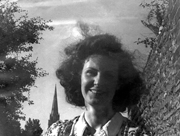
London, Guildford, Godalming and Midhurst became familiar to us; one day we took the train to Chichester and on to Arundel. All strange, beautiful and interesting to me. By mid 1946 it was time to go back to peacetime life. Dick's mother and aunt had by then moved to Edinburgh and Dick was to live with them when he was back at the university. We had a week's holiday in Lower Largo before I returned to Belfast. A highlight of that holiday was a cycle ride round the East Neuk of Fife to St Andrews where we found a teashop with 10 different items on the menu! It was remarkable how the friendliness of people in shops and restaurants increased the further north we went from Haslemere.
Betty had just completed the third year of the physics course at QUB, and in October I joined her for lectures by Professor Emeléus on quantum mechanics and by Dr Sloane - who had taught us glass-blowing in 1944 - on 'the old Bohr theory'. I was fortunate to have Dick to consult by letter and by telephone about points that puzzled me, and I even made use of my smattering of German to translate a relevant paper by Wigner. Our practical exam involved measurements with a zone plate. External examiner Prof Ditchburn from Reading got very excited when I concluded that there was a faint second line in the spectrum of the 'monochromatic' source and rushed round looking for a DVS to confirm it. Dick came over for graduation day, and went with us to Ramsey where my father's only, and much older, sister and her Manx husband had been living for ten years. Auntie Betty wrote poetry, played the mandolin, and dabbled in electricity. They had had one of the first telephones in Belfast and owned a motorcar long before anyone else we knew. She took me out for a day on a train once, and taught me how to hear the rhythm of the wheels. As a child I had hero-worshipped her, and was shaken when Dick referred to her as 'the old witch'.
In late July I applied for a job with Ferranti Scotland. Things seemed to be going well until they asked me to send a photograph of myself. Then sorry, we do not employ female scientists. At Dick's suggestion I wrote to Professor Childs at the Heriot Watt College (as it then was) in Chambers Street and was invited to go over for an interview. Childs, as even his wife called him, offered me a temporary assistant lectureship until Alan Wallace would be free to take up the post. After the interview Dick took me to tea in Jenners, the place to be in those days. There we noticed an advertisement for a flat to rent in Moray Place. Far more than we could afford, but we thought it would do no harm to look. The sittingroom was enchanting: large south-facing windows, an open fire in the semicircular end wall, a vase of scabious on the coffee table. The bedroom faced north, with windows a yard above head height. The coal bunker was between the stair and the kitchen. By the time Mrs H had reduced the rent to a reasonable figure we were committed. But we're not married yet, I said. She said It takes three weeks to get married ... ... I'll expect you on the 20th September.
We had already arranged to spend a few days visiting Geoff, Ninie and baby Lin in Coupar Angus. Geoff was now teaching in Blairgowrie. On the way back we had to change buses in Perth. A lemon-coloured dress in the window of a shop beside the bus stop caught my eye. I just had time to buy it, and a blue one for the bridesmaid. When I got home I found that my father had already organised the paperwork and my mother had taken a pile of food coupons from friends and neighbours to the local grocer who would provide a traditional cake. He was a bit put out when he discovered we would be cutting it before the icing had had 3 months to set. Dick came over the day before the wedding, with Joe Bell, a Geordie. Joe had shared workspace with Dick at ASE, as did Eric Stanley who shared Dick's passion for photography and Alan Fraser who shared his passion for music. Alan had suggested I give Dick Beethoven 8 for his 22nd birthday, and sent us Nights in the Gardens of Spain as a wedding present.
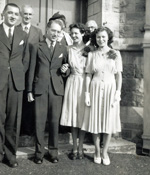
Our bridesmaid was from ASE too. Why Iris? Well, she had been the only soul in the lab when I went back there that work-free Saturday afternoon when I first had lunch with Dick. She was trying to mend her bicycle but needed a tool. I suggested she phone her fellow technician, Bud Abbot, in the optics lab. He came down, with the tool and with Dick. Bike mended, we all went up to their Nissen hut and toasted dry canteen Madeira cake on the stove. Never before had I met a man who was so interesting and easy to talk to, so I agreed when Dick asked if he could accompany me as I cycled back to Grayswood. Fortunately the dresses fitted, and we were married on Friday, 12th September, 1947.
The overnight boat to Glasgow was crowded. We slept on deck (a passing soldier tripped over my legs) and got to Dick's mother's house in Balgreen Road in the early morning. That evening we took a tram in to Princes Street to marvel at the shop windows decorated for the first ever Edinburgh Festival while we waited for the fireworks display that marked its close.
Iris, from Harrogate, travelled home via Heysham. On the train she got into conversation with the man she would marry. Their house in London is called Tenfold, 8 of their 9 children having been born at the time they built it. Sadly he died fairly young, but Iris was able to come to our golden wedding celebrations in Dunbar as was Betty, also a widow. She had taught in Cookstown High School and married a local farmer who had attended school in Littlebridge when one of my aunts was its only teacher; at least one of my cousins was taught physics by Betty.
I stayed at Dick's mother's while he went to a prearranged conference in Harwell, and we moved into 38 Moray Place the following Saturday. Alone together at last!
Once, I dared to climb on the antique dressing table and look out of the bedroom window at the spectacular view over the Forth. Dick did, too. We learnt a lot about cooking, for example that you do not prepare tattie scones before breakfast and leave them ready to cook when you get home. Adding flour to the deliquescent mess just makes it worse, but the reward is great when one of your guests says wonderful ... I have not tasted that since I left my mother's house. Jha was Indian. He shared a lab with another PhD student, Saha, who was from Pakistan. Following the news, they partitioned their lab with a chalk line on the floor. That winter of 1947/48 was bitterly cold in Edinburgh. Water streamed down the walls of our common stair, and our landlord failed his accountancy exams. He failed again in June, so they had to put the rent up; also they were expecting another child and they needed the space.
Our next landlady was different. More than once she insisted we were giving her too much. Evelyn C. Hardy lived in Canonmills, in the same terrace as the unostentatious little stone house where Robert Louis Stevenson had been born. Howard Place was built before 1844 by James Gillespie Graham, as was nearby Warriston Crescent where Evelyn's sister, Constance Kuenssberg, lived. Their mother had recently died, and we had her ground floor bedroom and sittingroom as well as a tiny kitchen, with mice, in the basement, and use of the shared bathroom upstairs; bath water hot twice a week. This was the third place we looked at after we'd advertised in the local papers. Evelyn liked the look of our feet, seen from her big basement kitchen as we approached her front door. And Percy had tutored Constance in chemistry when she was a medical student. He had become a friend of the family, and old Mrs Hardy memorably said give Sillitto a book and he'll be happy for hours.
The son of the third Hardy sister was staying in the house while he too studied medicine, having been evacuated to the States during the war. To keep John company, Evelyn rented a room to another student, Peter Johnson-Smith. Other young people occupied their rooms during the long summer vacation, notably Vernon Heywood and Virginia Wisniewski. Vernon at that time was studying at the 'tanics (Royal Botanic Gardens Edinburgh) along the road, preparing for his first visit to Spain. He is now a distinguished Emeritus Professor at Reading, specializing in medicinal and aromatic plants, and the conservation of wild relatives of plants. He corresponded with Virginia for many years.
An American of Russian descent working with the American army in Heidelberg, Virginia had made friends with Ekke Kuenssberg's
mother. Frau Kuenssberg had survived the war hidden in her own house and sometimes in the forest, always on the verge of starvation. Virginia visited us often in later years. She had intended to be a concert pianist but an accident changed her life and she worked as an innovative and highly respected conservator in the university library in Cincinnati. Ekke, like Trier, Bondi and Gold, had been transported to the Isle of Man in 1940, but Constance had managed, with the help of the bishop of Liverpool, to get him released.
For a while a small room beside our bedroom was occupied by a journalist who had worked for the Daily Mail, based in Tanfield across the road. Bill Gibson did not approve of the paper's politics, said so once too often and was unemployed. His wife and son had gone off to find peace in an old shooting lodge in Glenfinnan where Dick and I were invited to spend a weekend, my first visit to the Highlands. Years later Bill babysat for our son, before dying of lung cancer. He had introduced us to the delights of freshly ground coffee when we lived in Howard Place. We used to say that if a burglar met anyone on the stair he'd be offered a cupful.
There was still one empty room in Evelyn's house, small, dark, under the stairs. In 1949 when South African painter Patricia Ferreira Stacey was abandoned by her frequently married husband, Ole Sarvig, she and their baby were welcomed into this room. Pat had come to Edinburgh to study anthropology with Lewis Spence, then an old man who lived further along the terrace and who respected Ole as a fellow poet. After a while she followed Ole to Denmark, and kept in touch with us for a year or two. We greatly enjoyed her company and comments at the Rembrandt exhibition in the 1950 Edinburgh Festival.
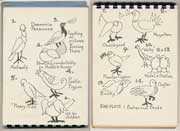
Evelyn had a great many interesting friends. They included Margery Walton and her husband, portrait painter Bill Hutchison. He had been appointed director of Glasgow School of Art in 1933. When the college needed a cook Evelyn filled the post and befriended many of the staff and students. I remember being in her kitchen one morning when a very young woman arrived and talked with a fluency and confidence that I could never emulate. This was Barrie Cowie, who appears in more than one painting by her father, James. Another time Evelyn invited me to meet Norah, Lady Mears, daughter of Patrick Geddes, over a cup of coffee. The moment we sat down she slapped her thighs and fixed her gaze upon me: Now, she said, ... tell me all about relativity. I was tongue-tied. Norah's friendship with Evelyn had started when Evelyn was in the Land Army and walking past the White House in Inveresk every morning to work in the fields of Musselburgh leeks.
One day Evelyn showed me an appreciation she had written about sculptor Archie Dawson who died during the installation of his colossal figure of St. Andrew for the Scottish Pavilion at the 1938 Empire Exhibition. Dawson's son Alasdair, usually known as Benji, was introduced to us at a dinner party in the Kuenssberg's house. He and his wife Katrina, granddaughter of Marjorie Kennedy-Fraser, were among our closest friends for many years.
We made many new friends at work, too, but one day we were contacted by Ray Whipple. He was still with the Admiralty, though now at Rosyth. We enjoyed several outings together. True to form, we were sitting on the top of West Kip in the Pentlands one day when an absent-minded hand came out and lifted our last sandwich. Before he went south again, Ray said, casually, I think I'll marry Mary. And he did.
In December 1950 we said goodbye to north Edinburgh and moved into a university flat in George Square. But that's another story. This one has a sequel. In the summer of 1968 we spent a few days in Oxford where Dick was examining a PhD student. The Whipples were living in Wantage, Ray by that time working at Harwell. Our son was with us and we all spent an afternoon with them. As we left they told us they would be in Spain the following week on holiday, but their eldest son would be on one of the Tall Ships sailing into Edinburgh. We also made a visit to Alan Fraser and his wife and daughter in Basingstoke. The following week we had a phone call: David Whipple? ... No, Ray. So they all came to tea with us before continuing their journey : to Skye.
Three years later our son joined the St Andrews University mountaineering club and noticed the name Simon Whipple on a list. He approached the young man who looked most like the boy he had seen in Wantage: Are you Simon Whipple? Yes, do I owe you money? They became good friends.
Dick and I visited Mary in Wantage a couple of times after Ray died while climbing in Torridon. Shortly after we moved to Dunbar in 1991 we had a visit from the youngest Whipple with her children, on the way to Torridon with Mary's ashes. Last month Simon was visiting our son and, as men approaching 60 do, they were talking about their fathers' careers. Simon realised he knew little about Ray's, and phoned me. There was little I could tell him but said I would try to remember or find out. Last week I mentioned this to Les Barr, whom we knew as a research student in the mid sixties. His ears pricked up. Oh, yes, Whipple's equation was the basis of my thesis on diffusion. Alan Leclair introduced us when I did the experimental work at Harwell.
It was for Simon that I started writing these reminiscences. He tells me the absent-minded gene missed him out.
Winifred Sillitto, 23 June 2012
